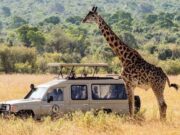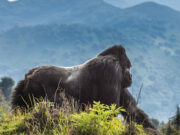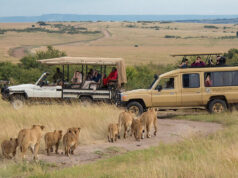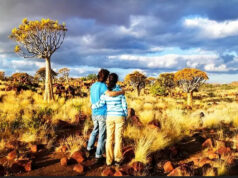If you want an authentic experience, the best way to travel Africa is on a conservation safari. You get closer to wildlife and nature than you would with any other travelling method. Of course the benefits also extend both ways.
In Africa, poaching is becoming a serious issue. Ivory is becoming a lucrative good. Choosing to travel on a conservation safari will reduce the environmental impact. Conversely, you can assist in volunteer and natural environment protection. Travelling these areas helps to increase awareness. It is only by understanding and targeting the problems that they can be resolved.
Conservation safaris can extend well beyond helping the natural flora and fauna to also benefit the young African children in need.
Studies have also shown a correlation between a reduction of tourists with an increased presence of poachers. Anti-poaching patrols are on effective method, but with such a diverse landscape and limited manpower, it is difficult to keep tabs on illegal killing. Beyond killing elephants or rhinos for ivory, plenty of other animals are included too such as lions, zebras, buffalo or wilder beast for their fur or hide and meat.
Even across Africa, the climate and national circumstances in each nation varies so widely. Kenya is one area where coordination is seeing a decline. Your experience here will differ greatly to that in South Africa. Which has a diverse from deserts, wetlands, natural forest and flourishing urban environments too.
In South Africa, the three major tourist cities are Cape Town, Pretoria and Bloemfontein. Johannesburg is at the centre of the country and is South Africa’s largest city. Diversity extends among the people with several culturally spoken languages such as Afrikaans, Swazi, Tswana and Zulu just to name a few in addition to English.
Pretoria, being the centre of government and administration is home to wonderful buildings. African conservation safaris can even be suitable and safe for kids. These tours are also available in Namibia.
Africa’s wildlife is stunning, arguably the best in the world. Animals can be seen at close range in their natural habitats. Many animals have grown accustomed to frequent motor vehicles passing by carrying camera happy tourists. Currently, the cheetah population is also sitting very low. Depending on your preference, a variety of different tours are on offer.
When to travel
While many consider weather seasons in travelling, scheduling times may also be determined depending on the animal specifies and native wildlife you intend to see. For the most part, your decision will be between two different choices – either the wet African season, or the dry season where grass plains are arid, and carnivores are on the prowl for prey. These two periods climax in great migratory periods across the plain. Other factors may include the method in which you intend to travel.
There are many methods of travel when choosing a conservation safari. Unlike other adventures, hiking or trekking will only get you so far on this vast terrain. One of the most common options is to use a four-wheel drive vehicle. This will give you the ability to travel across a variety of environmental elements whilst keeping important materials or food safely stowed away. Should you decide to venture further, simply park your vehicle and venture forth.
Of course safety is always paramount, and ensuring you are with someone experienced when embarking on a conservation safari is important too.
The biggest tip is to stay quiet and always try to keep wildlife undisturbed. As soon as you make loud noises, it will begin to attract animal attention which includes dangerous prey.
















